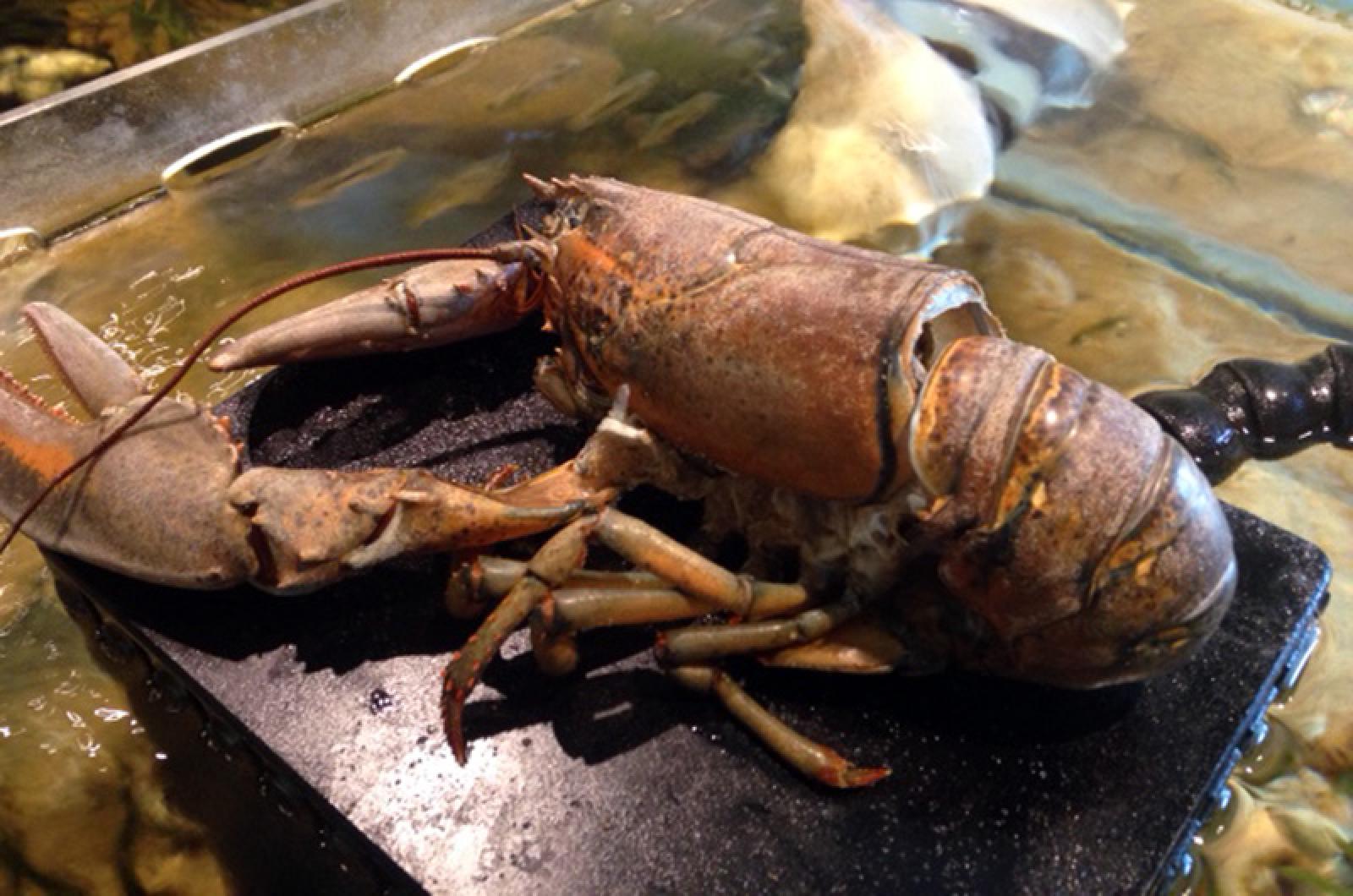She desperately needed to slip into something more comfortable. Her transformation, however, was anything but a seedy invitation. In her state of powerlessness, she was vulnerable. It was just the type of situation that a cunning crustacean might take advantage of.
This star of the natural world was not shedding her inhibitions, just her exoskeleton. She was not at a fancy party, but in a watery tank. Surprisingly, it was a tale of two lobsters.
The story starts with a single lobster in a tank on a Monday. By Tuesday, there were apparently two. It wasn’t a magic trick or a practical joke. She was just doing what she needed to do to get ahead in the world, and she was doing it without the creepy demands of a power broker. She was molting. The second ‘lobster’ in the tank was just the empty shell, or carapace, of the first.
Lobsters are “indeterminate growers” meaning that they grow their entire life. However, their shell or exoskeleton is unchanging, so cannot expand with their body. So, to increase in size, all lobsters need to shed their shells and grow another one in a process called molting. Preparing for, undergoing, and recovering from a molt is called “ecdysis” — a word derived from a Greek term which means “getting out” and it is more difficult and fascinating than I ever imagined.
Although lobsters molt often in their lives, it is safe to say it never gets easier. In fact, molting is so difficult that lobsters can die during the process. Early on, young lobsters need to shed their shells often to accommodate their high rate of growth. In the first five to seven years, which is the time it takes for a lobster to reach one pound, it can molt up to 25 times. After that, the number of molting events decreases, with adults molting once every one to two years.
Molting can be triggered by many factors, including water temperature and the length of daylight hours. The lobster itself can even repress the process: lobsters have glands in their eyestalks that release a hormone that inhibits molting. Females, for example, don’t molt when they are carrying eggs or preparing to lay them.
The actual act of molting is nothing short of amazing, and the process is positively peculiar. The first step is for the lobster to lay down a new shell under the old one. It will be an exact replica, incorporating any existing bumps and irregularities. Minerals from the old shell are removed and stored in gastroliths on either side of the stomach wall. These will fortify the new shell in a miracle of recycling.
Next, the lobster will draw out water and remove blood from its body to shrink its flesh and shrivel its limbs. To be successful, a lobster must lose half the weight of its claws in order to remove them through its wrist-like joints. Then it will break its shell between the tail and its main body, and lime at its joints will dissolve. With its smaller self, the lobster lies down on its side and flexes its body to back out of the shell.
It takes several minutes to more than a half an hour for the lobster to get out of its shell. When it does, it is soft and squishy and is called a jelly. All of its appendages, including its legs, gills, mouth parts, antennae, eyestalks, and pleopods (swimmerets) are part of this exodus from the shell, and the process of molting allows a lobster — in a truly astonishing by-product of regrowth — to regenerate lost limbs or body parts.
The emerged lobster is so soft that it can’t initially walk; so molting in its den or in a protected area is important for its survival while its new shell hardens. The lobster will patiently absorb seawater to stretch itself and pump itself up so the new shell won’t be too tight. For extra calcium, the lobster can even eat its old shell. It takes up to a few months for the new shell to fully harden.
The process is, no doubt, incredibly traumatic. But after such a harrowing experience, scars can and do heal. And thankfully, they emerge bigger, stronger, and more powerful than they could have imagined.
Suzan Bellincampi is director of the Felix Neck Wildlife Sanctuary in Edgartown, and author of Martha’s Vineyard: A Field Guide to Island Nature.







Comments (3)
Comments
Comment policy »